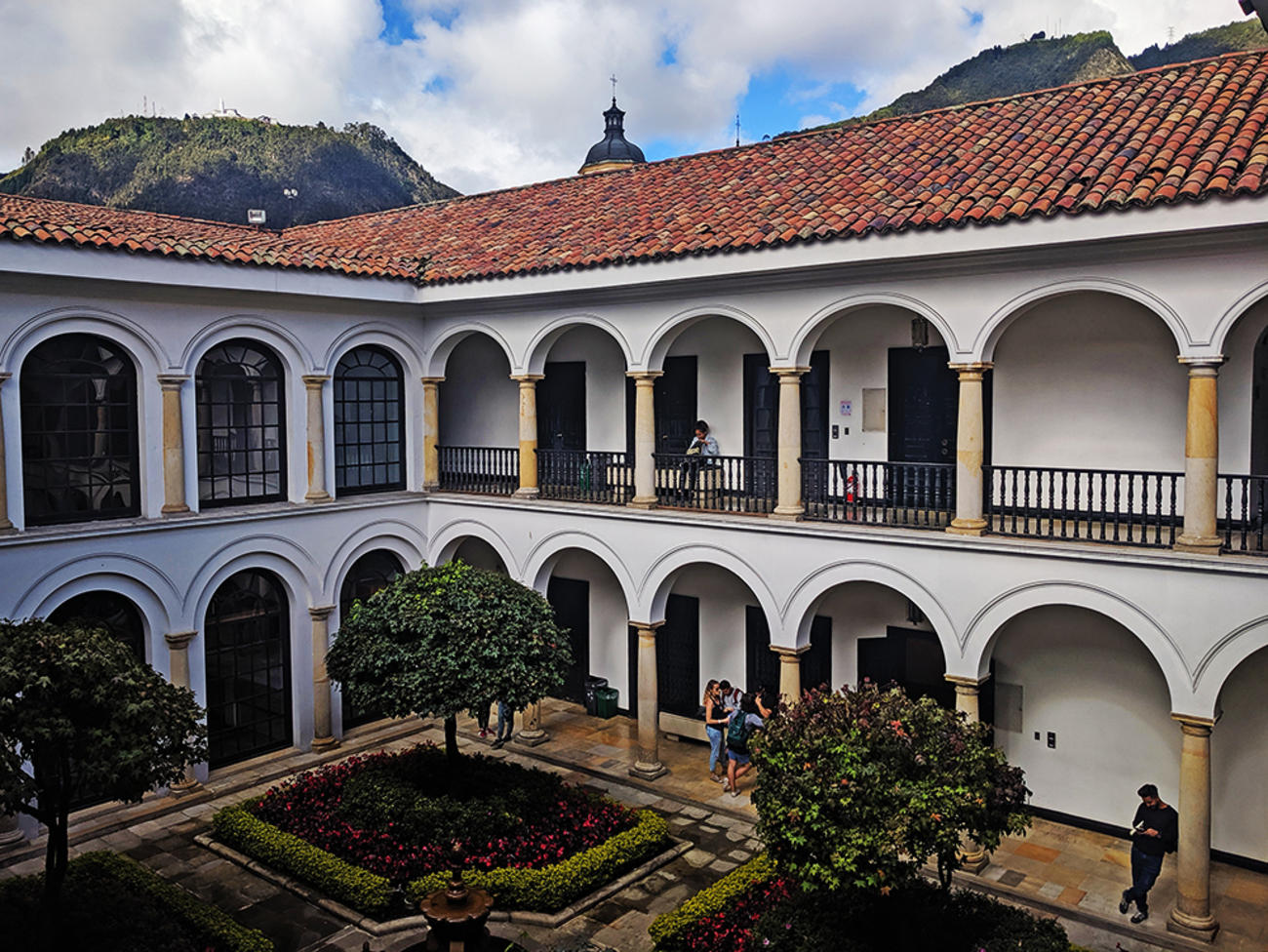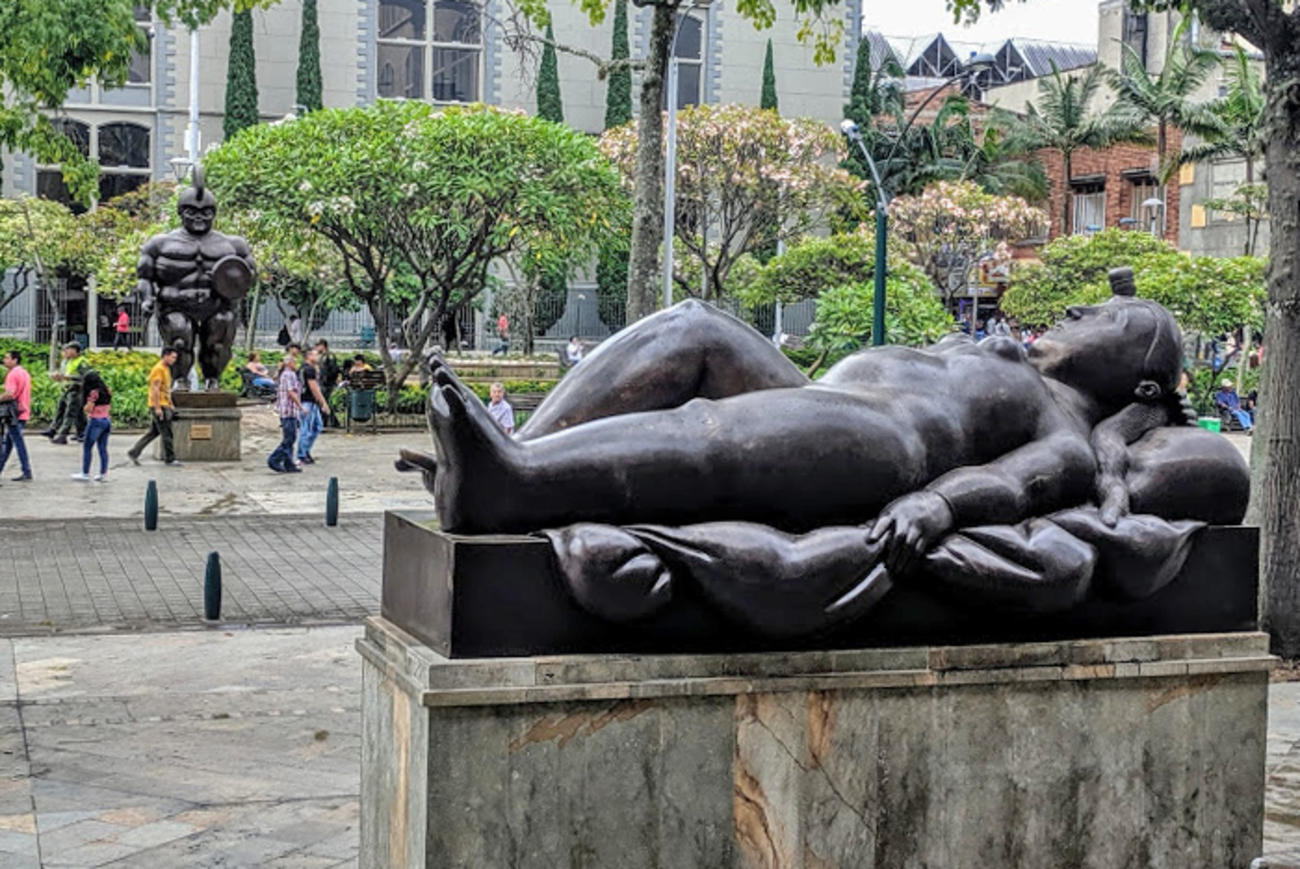Thanks to Gabriel García Marquez and his immortal works of literature, the world has long been aware of the creative force of Colombia’s artists. Colombia’s other artistic twin tower is painter and sculptor Fernando Botero. The Colombian master was born in Medellín and has lived as a true citizen of the world, spending much of his time in Paris these days, but still returning annually to Colombia. Botero says he focused on Latin American themes for his work after a stay in Mexico, and one can see the influence of Diego Rivera in his work, mixed with Spanish masters Francisco de Goya and Diego Velázquez. However, his style is unmistakably his own. It is impossible to mistake a Botero work for that of any other artist.

In fact, some might say that all of his subjects are really the same generic person, dressed up differently. Botero’s universal human is beady-eyed and impossibly small mouthed, with an overly voluptuous body that somehow never looks fat. For an artist that spends most of his time in Paris, the land of fashion-obsessed ultra-slim models, Botero thumbs his nose at all conventions. His style is nearly historic, his figures have frozen expressions, as if not alive, but absurd mannequins that scream out rebellion to all our beauty and artistic norms. Yet, despite this seemingly impossible formula, his paintings and sculptures are universally desired. We love his subjects as they are. There appears no need to put his subjects on a diet or to modernize his technique with the latest trends.


It is something irresistible in his art that draws people from around the world. Without knowing why, we buy into Botero’s world view, entering into his dream of humanity inside a bottle, floating on the sea of Botero’s imagination. Though we have not been instructed by art critics to love Botero’s works, we are naturally drawn to them. It does not matter if he is painting an upper-class family, an armed rebel or poor miners. Botero’s vision of our fellow man touches a nerve. At first there may exist an underlying, creepy fascination, but soon we want to be as close as possible to his characters and their places, to live however briefly in his paintings and ultimately give his subjects a fraternal hug.
Perhaps there is something equalizing about having the same basic face on every type of human being. The more he dresses up that mannequin in different outfits, different situations, different social classes, the more we look the same. Botero's rotund humanity is an equalizer, an affirmation that we are really all one.

I was fortunate to be able to view his work both in Bogotá and Medellin on a trip in June of 2019 to Colombia and found a new appreciation for his work, one that cannot come from viewing just a few of his works in a gallery or photos of them on the internet. For any visitor to Colombia, it would be a shame to miss seeing Botero’s work in his home country. One can view his paintings in Medellín at the Museo Antioquia and in Bogotá at the Museo Botero. In his hometown of Medellín, many of his sculptures populate the Botero Plaza, where they have been subjected to countless selfies with people from around the world. This persistent pressing of real against imagined flesh, of humanity against the sculptures, has discolored the pieces. I am guessing Botero would have it no other way, for his subject has never changed. It has always been us.
